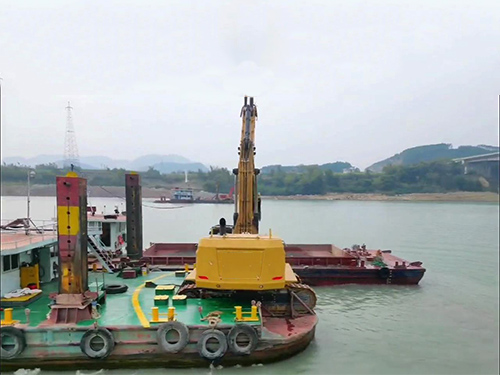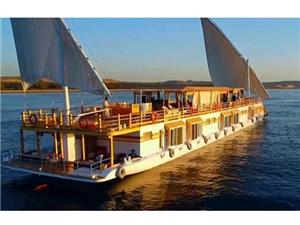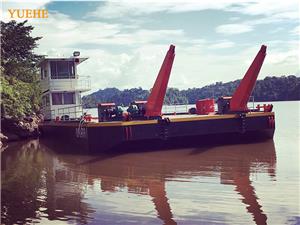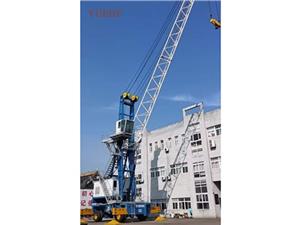How to choose the positioning spud for Excavator platform?
Whether the excavator platform needs to be equipped with positioning piles depends on a comprehensive analysis considering its operating environment, platform characteristics, safety requirements and economic factors. The core function of the positioning piles is to fix the platform position, resist external force interference (such as water flow, wind force, soil loosening, etc.), and ensure the safety, accuracy and efficiency of the excavator operation. The following will be explained from three aspects: necessity analysis, applicable scenarios, and alternative solutions.
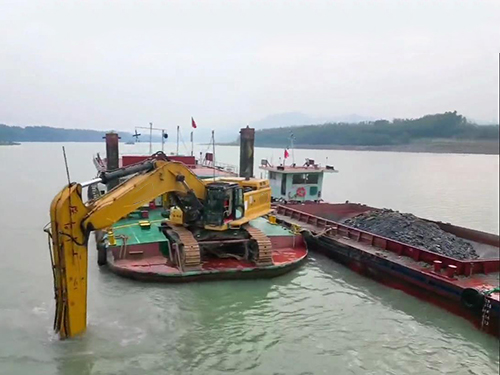
I. Analysis of the Core Function and Necessity of the Foundation Piles
(1) Function of the positioning pile
The positioning piles serve as the "fixed anchor points" for the excavator platform. By being inserted into the foundation (such as soil, rock, or concrete) or connected to external fixed structures (such as dock pile foundations), they limit the horizontal displacement and vertical settlement of the platform under external forces such as water flow, wind force, and ship collisions. At the same time, they can also assist in resisting additional stresses during the operation of the excavator (such as the reactive force generated when the bucket cuts the soil).
(2) Scenarios where positioning piles must be installed
When the excavator platform is exposed to the following risks, the positioning piles are necessary safety measures:
1. Unstable working environment:
• Fast water flow (such as in rivers, tidal areas, with flow speed > 1.5 m/s) or strong winds and waves (Pouffier wind force ≥ 5 levels);
• The foundation is soft (such as clayey soil or backfill), and the platform's own weight is insufficient to withstand the lateral soil pressure;
There is a risk of ship collision in the operation area (such as near ports and waterways).
2. High-precision operation requirements:
• The excavator needs to perform precise positioning tasks (such as slope adjustment for channel dredging and pile foundation drilling at the wharf), with the horizontal displacement error being ≤ 5 cm;
Continuous operation scenarios (such as 24-hour continuous dredging) require avoiding repeated positioning or over-dredging due to platform drift.
3. Insufficient stability of the platform itself:
• Small/light platforms (with a length of less than 10 meters and a weight of less than 5 tons) have weak resistance to wind and waves/currents.
The cantilever or extended platform (for example, when an excavator is installed at the edge of the platform) has a center of gravity that is shifted, resulting in a decrease in the anti-overturning capability.
4. Regulatory Requirements:
• Some industry regulations (such as the "Port Engineering Quality Inspection and Evaluation Standards" and the "Inland Waterway Traffic Safety Management Regulations") stipulate that fixed devices must be installed on platforms for waterborne or water-adjacent operations;
When conducting operations in marine environmental impact zones (such as ecological protection areas), positioning piles should be used to minimize the disturbance caused by the platform's movement to the seabed.
II. Scenarios without the Need for Positioning Piles and Alternative Solutions
Under the following conditions, the excavator platform can ensure stability through other means and does not require additional positioning piles:
(1) The platform itself is stable enough.
• Large/heavy-duty platforms: The platform has a large size (length ≥ 20m), a high self-weight (≥ 20t), and a large contact area with the ground (such as a concrete foundation), and its own ability to resist wind and water has met the requirements.
• Rigid connection structure: The platform is rigidly connected to the fixed facilities (such as docks, wharfs) through welding, bolts, etc., resulting in a low risk of displacement.
(2) Stable working environment
• Still water / slow-flowing environment: Water flow speed ≤ 0.8 m/s, no wind or waves (Beaufort wind scale ≤ 3), with minimal external disturbances;
• Robust foundation: The operation area consists of rocks, dense clay, etc. The platform is directly placed on a stable foundation and does not require additional fixation.
(3) Mobility needs take precedence
• Mobile platform: Such as hydraulic self-propelled excavator platform (with crawler or wheeled chassis), which can adjust its position through its own power system and does not require fixed positioning piles;
• Temporary short-term operation: The duration of a single operation is no more than 24 hours, and the operation is frequently shifted (such as emergency rescue, minor maintenance). Temporary ballast (such as sandbags) or ground anchors are used as substitutes.
(4) Alternative Fixed Plan
If no positioning piles are required, the following methods can ensure the stability of the platform:
Alternative solution Applicable scenarios Advantages Disadvantages
Ballast weight: For small platforms (≤10t) and in still water environments, the cost is low (using sandbags or stones); however, it increases the platform's weight, which may affect its mobility.
Anchor (expansion bolt) Concrete or hard foundation, short-term operation. Installation is quick (1-2 hours); however, it is difficult to reuse after the foundation is damaged.
Hydraulic pin positioning. Mobile platform (such as a hydraulically-driven jack-up platform) can be quickly raised/lowered and locked, balancing mobility and stability; the cost is relatively high (requiring a hydraulic system as a supplement).
Anchor chain + anchor mooring. Waterborne operations (such as rivers, lakes) that require temporary fixation. Applicable to scenarios with water depth ≤ 10m; regular inspection of anchor chain wear is necessary, and the anti-wind and wave resistance capacity is limited by the weight of the anchor mooring.
III. Considerations for Selecting and Designing Foundation Piles
If it is decided to install positioning piles, the type should be selected based on the characteristics of the platform and the working environment, and the design parameters should be optimized:
(1) Selection of Pile Type
Type Material Characteristics Applicable Scenarios
Steel piles Q235/Q345 steel have high strength, are easy to process and can be reused; they require anti-corrosion treatment (epoxy coating). They are mostly used for waterborne/embankment platforms (ports, channel dredging), especially in scenarios where frequent movement is required.
Concrete piles with C30/C40 concrete have excellent corrosion resistance and durability; they are heavy and require pile-driving equipment for installation. Suitable for long-term fixed platforms (such as permanent docks at ports) and heavy-load platforms (≥50t).
Composite piles: steel piles + concrete pile heads. It combines the ease of installation of steel piles with the impact resistance of concrete piles; suitable for hard ground bases (rock layers). Used in marine engineering and excavator platforms in complex geological conditions (such as underwater rock layers).
Hydraulic pin pile: Steel pile + hydraulic system. It can automatically rise and lower/lock, with high positioning accuracy (error ≤ 5mm). It requires a hydraulic station and control system as a complement. High-precision operation platform (such as the positioning pile car of a dredger), medium-sized platforms that need frequent position adjustments.
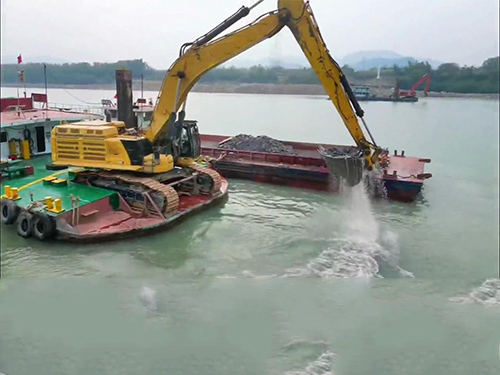
(2) Key Design Parameters
1. Pile length and penetration depth:
• The penetration depth must meet the anti-pull-out stability requirement (the anti-pull-out force ≥ the maximum horizontal external force of the platform × 1.5 safety factor);
• Soft soil foundation (silt): Pile length ≥ 3 - 5 times pile diameter, penetration depth ≥ 2 meters;
• Hard foundation (rock): The pile length should be ≥ 1 - 2 times the pile diameter, and it must penetrate the overlying layer to reach the rock layer by at least 0.5 meters.
2. Pile diameter and spacing:
• Diameter of single pile: Steel piles ≥ 150mm (for small platforms), ≥ 200mm (for large platforms); Concrete piles ≥ 200mm;
• Multiple-pile arrangement: The spacing should be ≥ 2 times the pile diameter (to avoid the group pile effect), and the piles should be symmetrically distributed at the four corners or edges of the platform (to resist lateral forces).
3. Preservation and Protection:
• The steel piles must be coated with epoxy coal tar pitch (with a dry film thickness of ≥ 200 μm) or undergo hot-dip galvanizing (with a zinc layer thickness of ≥ 80 μm);
The concrete piles need to be treated with anti-corrosion agents (such as slag powder) and a protective layer (with a thickness of ≥ 30mm) should be set.
4. Positioning accuracy control:
• Utilize the RTK positioning system (real-time dynamic differential positioning) to assist in the layout of the stakes, with the planar error being ≤ 5mm;
The hydraulic pin piles need to be equipped with sensors (such as displacement meters and inclinometers) to monitor the platform's position deviation in real time.
IV. Summary
Whether the excavator platform is equipped with positioning piles depends on a comprehensive assessment of environmental risks, platform stability, operation accuracy, and regulatory requirements:
• Must be equipped: in scenarios with strong water flow/wind waves, soft ground, high-precision operations, or where it is mandatory by regulations;
• Alternative solution: For scenarios where the platform is stable, the environment is calm and solid ground, or for short-term or mobile operations, these can be replaced by methods such as ballast or ground anchors.
• Key Design Points: The type of foundation piles should be selected based on the geological conditions and operational requirements (steel piles/ concrete piles/hydraulic piles), and the pile length, spacing, and anti-corrosion measures should be optimized to ensure uplift resistance, horizontal force resistance, and durability.
In actual engineering projects, it is recommended to quantify the probability and consequences of platform relocation through risk assessment (such as HAZOP analysis), strike a balance between safety and economy, and when necessary, entrust a third-party institution to conduct stability verification (such as finite element analysis).
